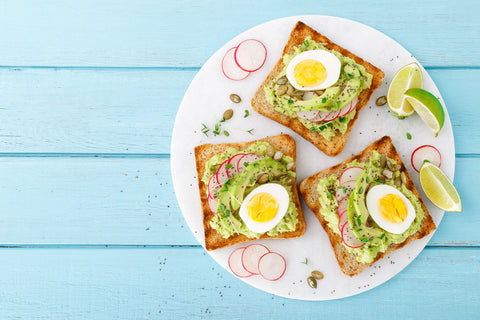3 Tips To Help Beginners Succeed On The Keto Diet Plan


The Keto Diet is experiencing a surge in popularity because many people find that they can experience weight loss success on the Keto Diet, even when they've previously struggled with dieting. Many Keto Diet practitioners believe that the Keto Diet is more than just a fad. They think that it's a significant change in a person's way of eating and a choice that can help people take control of their eating habits and live a healthier, happier life. But for some beginners, the Keto Diet is a significant change in their lifestyle. With these three tips to help beginners succeed on the Keto Diet plan, you will be better able to help set yourself up for success on the Keto Diet and hopefully make the Keto Diet part of your new eating lifestyle.

1) Utilize Intermittent Fasting
For many practitioners of the Keto Diet, intermittent fasting and Keto go hand in hand. On the Keto Diet, practitioners are interested in getting their body into ketosis, which is the process where your liver turns fat cells into ketones, which uses up your stored body fat as an energy source, instead of using glucose from carbohydrates. Intermittent fasting refers to the practice of selectively fasting from food, and, with this process, intermittent fasting may be able to help your body get into ketosis faster by helping to eliminate glucose from your body. When your body fasts, it looks for alternative sources of energy to use, and, when combined with the Keto Diet, you would only be giving your body the option of using ketones (processed from stored fat) for energy. When you eliminate the carbohydrates from your diet, your body no longer has carbs (glucose) to use as a source of energy.
Some practitioners of intermittent fasting limit their daily eating to specific time windows, either between four-, six- or eight-hour windows, which means they only eat meals during particular time periods during the day. Some practitioners will instead go on 24-hour fasts, which may also be helpful for getting your body into ketosis. If you choose to practice intermittent fasting while doing the Keto Diet, it's essential to listen to your body. Intermittent fasting can help some people lose weight, improve mental clarity, and boost energy. However, if you are very hungry or find that you are having negative symptoms (headaches, nausea, dizziness), then be sure to ease yourself into intermittent fasting, or just focus on practicing only the Keto Diet until your body becomes adapted to using fat for energy.

2) Cut Out The Low-Fat Processed Food
On the Keto Diet, full-fat foods are what you should be eating. While this is a significant mental adjustment for most dieters, told for years that eating low-fat means eating healthier, practitioners of the Keto Diet need to switch from relying on carbs for energy, to relying on fat. Often, low-fat foods, while being sold as the "healthier" option, are full of extra sugar. Because they've had the fat mostly removed, food companies compensate for the lack of taste by adding sugar, which means many low-fat processed food options are full of sugar and carbohydrates. By eating these foods, your body will likely not need to create ketones for energy, which means instead of losing fat, your body will keep using glucose for energy.
Skip the low-fat processed foods and get back to whole, full-fat food options. A good rule of thumb to remember for the Keto Diet is the less sugar, the better. Choose foods high in good fats (coconut oil, olive oil, organic butter) and low in sugar (carbs). The full-fat options will help keep your body fueled up and feeling full for longer. Fat takes more time for your body to digest than glucose, which could mean that you'll end up eating less overall as your body may not feel as hungry. Carbs and sugar trick people into thinking they're more hungry than they are due to sugar's addictive properties. So kick the sugar addiction and eat more fat with your Keto Diet plan.

3) Remember That Weight Loss Takes Time
Because many people tout the Keto Diet as a quick way to lose weight, sometimes when practitioners don't experience a lot of weight loss right away, they can become disheartened and quit the diet. While the Keto Diet has been used successfully since the 1920s to help patients with epilepsy control their seizures, it has recently gained popularity as a useful tool in weight loss and weight management. Understand, however, that if you are significantly overweight, it can take time to lose the pounds. Remember, when practicing the Keto Diet, it is considered healthy (and more maintainable in the long-term) to lose about 1 to 2 pounds per week. Combined with exercise, the Keto Diet may help you lose weight and get your diet back on track. Weight loss that lasts happens over an extended period. Think about how long it took you to get to your current weight and remember to be patient with yourself and the diet.
The Keto Diet plan may help you reach your weight loss goals, but practitioners need to make sure to arm themselves with the tools they need to succeed. With these three tips to help beginners succeed on the Keto Diet plan, you may be able to help jumpstart your diet, while avoiding some common misconceptions about the Keto Diet plan. As with most major lifestyle changes, and especially if you are currently experiencing any health issues, be sure to consult with a certified healthcare practitioner or your doctor before starting any diet plan.










Leave a comment